Cory Smetana
We left Fargo after our last rest day eleven days ago in the early afternoon. It didn’t take long to get out of the city and into flat, ubiquitous farmland. The vast forests of the lake covered Midwest had disappeared and vegetation was only found alongside rivers and creeks now. After a flat and fairly uneventful day we stopped at a campsite down in the first river valley west of Fargo named “Little Yellowstone Park.” This was a great halfway point to Gackle, where we knew of a couple that offered hospitality to bicycle tourists, similar to Donn and his “Bicycle Bunkhouse.” This abode in particular was named the “Honey Hub.” A young couple and their few kids offered up their basement to traveling cyclists; the husband is a beekeeper, hence the name. The evening we arrived we found seven other cyclists staying the night, either camped outside or on a mattress in the basement, one of which we were able to secure with our early arrival.
We left Fargo after our last rest day eleven days ago in the early afternoon. It didn’t take long to get out of the city and into flat, ubiquitous farmland. The vast forests of the lake covered Midwest had disappeared and vegetation was only found alongside rivers and creeks now. After a flat and fairly uneventful day we stopped at a campsite down in the first river valley west of Fargo named “Little Yellowstone Park.” This was a great halfway point to Gackle, where we knew of a couple that offered hospitality to bicycle tourists, similar to Donn and his “Bicycle Bunkhouse.” This abode in particular was named the “Honey Hub.” A young couple and their few kids offered up their basement to traveling cyclists; the husband is a beekeeper, hence the name. The evening we arrived we found seven other cyclists staying the night, either camped outside or on a mattress in the basement, one of which we were able to secure with our early arrival.
The next three days we set out for Richardton, another cyclist’s secret I’ll get to in a minute. It was nearly 200 miles from Gackle. The first of the three days was tough, full of howling headwinds. The second day, however, the winds were in our favor. We cruised into Bismarck for an early lunch, and crossed the Missouri River as we left town. After Bismarck the terrain drastically changed. It went from the flat fields and farmland to tall, rolling hills with occasional buttes surfacing. When we reached New Salem, most renowned for its giant cow statue, we decided we had the energy to keep going to Hazelton, putting in another 100+ mile day.
Because of our big day, the next day into Richardton would be a short one. We arrived early afternoon and ate at the local café; unfortunately for them, they still had their breakfast buffet available. Unbeknownst to us, we had just crossed into Mountain Time. With the extra hour in our pocket and pancake crumbs in our beards we set off to the other side of town, to our target, Assumption Abbey, a Benedictine Monastery that was built just over a hundred years ago. We were told that the monks, who all live in the monastery, are very hospitable and have taken in bicycle tourists before. We entered the church, where we met a monk who told us to wait for Brother Odo, the one that deals with our kind. We walked around the premises for a while, taking in the beautiful escarpment that sank into the distant hills and reservoirs behind the church. You could see for miles. When Odo finished his Sunday afternoon walk, he was delighted to meet us and show us around the robust monastery with a picturesque sanctuary, which was refurnished about a decade ago.
The property includes the church, a maintenance building, and a two story building containing college dorms, no longer in use (aside from a few random visitors like us). There is also a ranch, a reservoir and more land behind the church. The monks strive to be self-sufficient, and live a very routine life. We were invited to dinner and a silent breakfast the next morning. Brother Odo noted that the silent breakfast would be an easy task for me, but joked it would have Kellen biting his tongue between bites for the meal. After the early, hearty breakfast we packed up and continued west.
It was smooth sailing in the morning and early afternoon of this mid-July Monday. We passed through the growing, industrial city of Dickinson. As we left the city, we started to see countless oil rigs, which we had only heard of until this point. We learned from one of the monks that North Dakota had just risen above Texas as the highest producer of oil in all fifty states. The gigantic oil boom has brought a surplus of money and has provided the state with enough jobs to give it the lowest unemployment rate in the country. Although these positive effects are shadowed by some negative, including a housing shortage requiring construction camps, increases in violent crime, and inefficient methods of production and capture. It also puts a lot of strain on the states roads, water supply and sewage systems causing many residents to take this up rise in economic activity with a grain of salt.
Only ten miles from the majestic city of Medora, some dark clouds stormed in from the southwest. We were fortunate to pull off at the next exit for a fantastic view of the Painted Canyon, part of Theodore Roosevelt National Park. As soon as we took our first couple pictures of the gorgeous landscape it started to downpour and we hustled to the visitor’s center a hundred feet from the lookout to keep dry during the short, but mighty storm.
We were now in the thick of North Dakota canyon country and the badlands. We made it to Medora and planned the rest of our day during lunch. We were interested in hiking through some of Theodore Roosevelt National Park, seeing the Medora Musical (a theatrical tribute to Theodore Roosevelt and the state of North Dakota), and setting up camp afterward. Soon enough we were hiking on the first few miles of the Maah Daah Hey bike trail, an extensive bike trail starting just south of Medora and continuing 120 miles to the northern part of T.R. National Park. It was nice to get off the bike and get some off road views of this dry, gorgeous terrain formed by deposition and erosion.
We left the hike and hustled back into town to grab a quick sandwich, all the while partaking in our usual activity of searching for a free camp spot (hard to come by in a tourist town like Medora). This caused us to be late for the musical, rushing uphill just out of town to the musical venue while taking bites of our sandwiches. When we arrived, we finished eating and were calmed by the fact we could do this and watch the musical itself from a high railing outside of the seating area. We missed the beginning of the play and decided to continue watching the duration of it from the “nosebleeds”, while talking to some friendly bus drivers who had hauled in groups of tourists. Watching the play for free and finding a cemetery with surrounding green space halfway down that steep hill to camp can be attributed to our ongoing money saving prowess, or maybe just our unruly timing. Either way things were working out.
We left our campsite which had a breathtaking overlook of Medora which we enjoyed at night, but not on this particularly foggy morning. It wasn’t long after we left when we entered the enormous state of Montana. The days grew hotter, creeping well into the 90s; the sun was barreling down on us and the rocky asphalt that is Interstate 94. We made it to Glendive, the first substantial city in eastern Montana. We hustled to this town, not only to stay out of the heat, but to pay a visit to the Glendive Dinosaur and Fossil Museum, “the largest dinosaur and fossil museum set in the context of biblical history.” They actually had some very interesting information about local dig operations and the process of casting and making durable skeletal replicas for the museum. We also spent some time exploring other “interesting” exhibits in the two-story museum, complete with diagrams condemning evolution, charts proving dinosaurs and men coexisted, and skeletons promoting biblical stories and their linkage to fossils found around the world. We were moving quietly through the exhibits until a trio of fellows, well-educated in creationism and biology came up to ask Kellen a few questions. This led to a friendly two-hour debate about evolution, genetic code, plate tectonics, and the history of planet earth. The conversation went an hour past the closing time of the museum. We were eventually nudged to leave by the employees.
After Glendive, we departed from the “Northern Tier” and were forced to map our own route on our detour to Yellowstone and Teton before we return north to Glacier National Park. With the spreading distance of towns and blunt absence of inhabitants in eastern Montana, we didn’t have many options besides I-94. We travelled on the shoulder for the countless miles, stopping at rest stops for water and a place to set up camp. One night we even camped in the grass circle of a freeway exit ramp, hidden between some bales of hay. In this more remote part of the country, we decided to finally whip out the stove to start cooking our own food: rice and beans, ham, pasta, and steamed vegetables for good measure.
I-94, the familiar highway for us Michiganders, starts in Port Huron, Michigan and ends at the junction with I-90 just before Billings, Montana, the destination for our much anticipated rest day. Billings is the biggest city of the state and is home to many outdoorsy, friendly, good-spirited people. On the way in town we stopped at a restaurant called Burger Dive. It is renowned for winning the Food Network national best-burger contest last year; needless to say both Kellen and I housed the award-winning Blackened Sabbath burger. The friendliness of people in town was evidenced when our host, Mike, said his arm would nearly go numb on drives around town from the number of waves he had to dish out. Mike, son Tanner, and dog, Zeus, were our gracious hosts in Billings. Not familiar with the city and what to do in the area, our rest day itinerary was made easy when Mike, a former rafting guide in California and Utah, invited us down to the river with the family on Saturday. We had a wonderful day rafting, kayaking, and swimming in the Yellowstone River, the same river we’ve traced and stared at with our eyes stinging of sweat, all the way from Glendive. They provided incredible hospitality and some amazing meals as well for our stay in Billings. Learning about the area and exploring the Yellowstone River with an outdoor expert was a blast and no doubt a time well spent. I definitely feel like we’re out west now, and am anxious to embark on our National Park binge in the near future.
Finally, photos of Wisconsin, Minnesota, and North Dakota have been added, check them out on the Photos page.



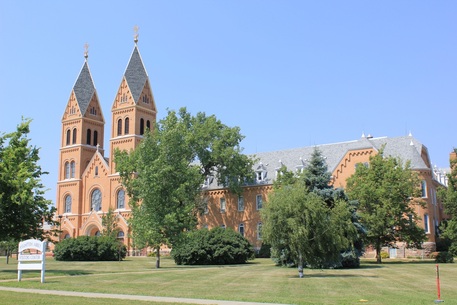

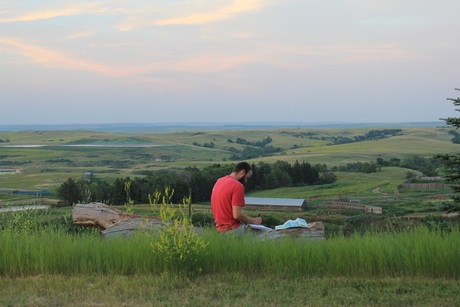

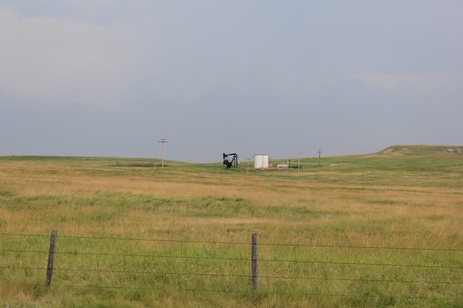

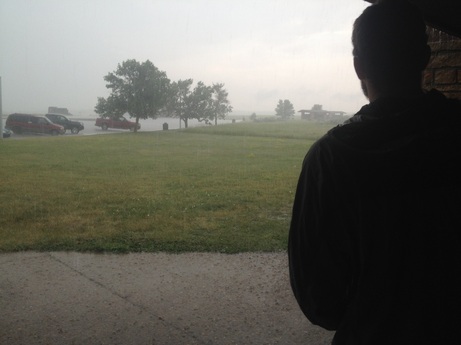


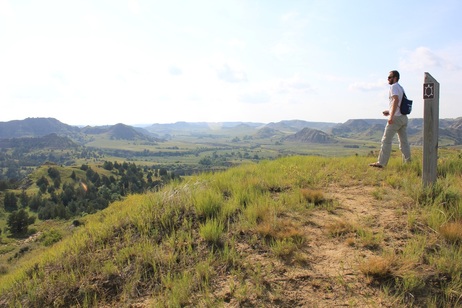



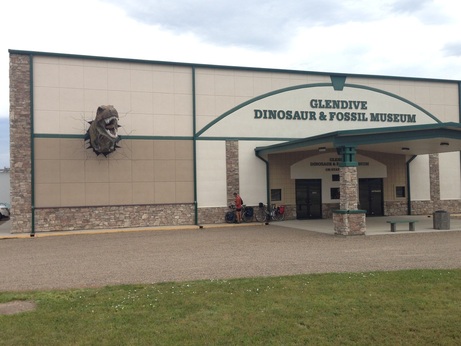



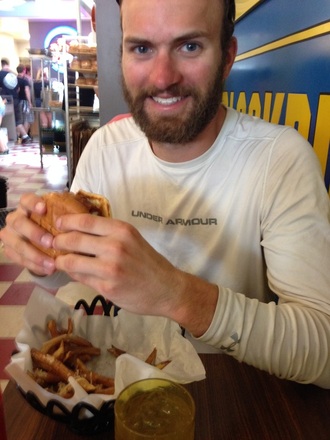

 RSS Feed
RSS Feed